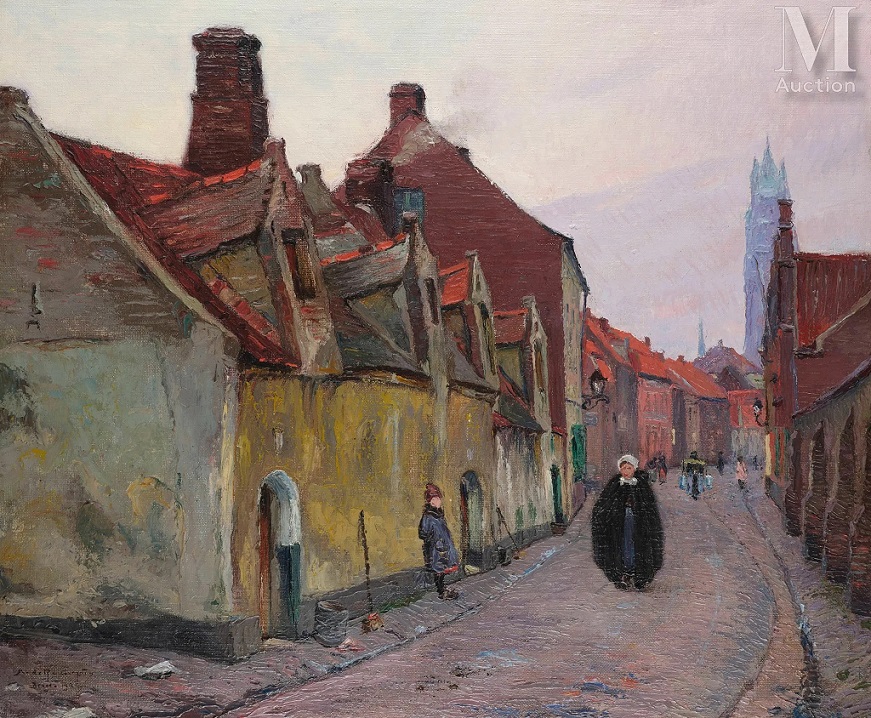Pozwolę sobie w tym wpisie na użycie zasłużonej złośliwości w stosunku do Sopockiego Domu Aukcyjnego. Opieram wątek na wycofaniu przez ten dom aukcyjny, chyba po wielkich bólach, nędznego falsyfilkatu kredki ‘Wirującego koła’ Wojciecha Fangora, uznanego tam za wybitną pracę z jeszcze bardziej wybitną wyceną bo 100,000 – 140,000 złotych (https://polishartcorner.com/2023/10/22/fangor-z-usa-w-sopockim-domu-aukcyjnym-za-100000-140000-zlotych/).

Gdyby nie wpis na Polish Art Corner, zainicjowany przez uważnego czytelnika (sam rzadko przeglądam katalogi polskich domów aukcyjnych), doprawiony potem oceną Fundacji Fangora to mielibyśmy wprowadzony na polski rynek kolejny falsyfikat, tym razem przez grono najwybitniejszych historyków i znawców polskiej sztuki z SDA. Falsyfikat raz wprowadzony ulega obrotom rynkowym, zyskuje kolejne proweniencje przy sprzedażach a tym samym uznanie w oczach zagubionych kupujących. Czy kupujący nie powinni mieć zaufania do domu aukcyjnego, że ten nie wprowadza falsyfikatów na rynek? Ile falsyfikatów krąży na polskim rynku? Są oceny mówiące, że ok 30% prac malarskich to falsyfikaty. Postaram się o tym osobno wkrótce napisać.
Jestem przekonany, że SDA przegląda Polish Art Corner bo w przeszłości miałem z nim drobne utarczki na piśmie. Firma ta bacznie śledzi by jej dobre imię nie było szargane i potrafi sugerować prawne kroki. Znam z przeszłości jeden proces sądowy złożony i wygrany przez SDA ale nie potrafię powiedzieć ile ich było. Jeden z czytelników, przekonany o autentyczności tej pracy Fangora sugerował, że jedynie moja anonimowość zapobiegła wysłaniu mi pozwu sądowego. Trudno powiedzieć czy rzeczywiście bo anonimowości nie ma w sieci. Jednak… SDA zupełnie zabrakło zdrowego rozsądku przy ocenie tego falsyfikatu skoro przyjęto go na aukcję. Nie była to sprawa na prawdę finezyjna i należy wyrazić żal, że piewszy odruch oczu pracowników i ich ekspertów całkowicie zawiódł. Zaufanie firma łatwo może stracić i łatwo może stracić dobre imię. Każdemu wpadka może przytrafić się ale nie powinno to mieć miejsca w przypadku tak oczywistego knota.
Przy odrobinie czasu i dobrej woli Sopocki Dom Aukcyjny mógł sam sprawdzić absurdalną proweniencję tego falsyfikatu. Nie trzeba mieć licencję detektywa by odszukać, że to Antique Arena, dom aukcyjny na Brooklynie w USA sprzedał komuś ten kartonik. Antique Arena sprzedaje wiele ‘poloników’ na swoich aukcjach. Na nadchodzącej ich aukcji 4-go listopada wyróżniają się dwie prace, których fotografie poniżej zamieszczam: akwarela Juliusza Kossaka i olej Czesława Wasilewskiego. Jakiś ‘polonus-artysta’ prawdopodobnie współpracuje z tą firmą bo widzę dokładne dane biograficzne o malarzach. Takie biografie, przepisywane z różnych stron bardzo nobilutują wystawiane obiekty, co widac na przykładach Antique Arena oraz Sopockiego Domu Aukcyjnego – latwo teraz ustawić na tym samym piedestale oba domy aukcyjne.
Myślę, że historycy z SDA powinni rozważyć kupno obu wymienionych prac by je odsprzedać w Sopocie. Ze skromnością proponuję następujące konserwatywne wyceny katalogowe: Juliusz Kossak 60,000 – 80,000 złotych, Czesław Wasilewski 20,000 – 25,000 złotych. Dodam, że obie prace są nobilitowane na łamach niezłej francuskiej platformy druot.com (pecunia non olet); jak się zapłaci za reklamę to się ma tam reklamę. Brooklyn Brooklynem ale nobilitacja w paryskim Druot to już jest coś! https://drouot.com/en/v/145801-fine-art-and-antique-estate-auction-127?offset=100&triSearch=num&venteId=145801
KOLEKCJONERZE, BROŃ SIĘ SAM, UCZ SIĘ I NIE UFAJ SŁOWU PISANEMU W KATALOGACH, NIE ULEGAJ PRESJI. YOU ARE ON YOUR OWNI!!!

Lot 103. 1862 POLISH WATERCOLOR PAINTING BY JULIUSZ KOSSAK. Juliusz Fortunat Kossak, Polish, 1824 to 1899, watercolor painting on paper depicting a military horseback portrait, 1862. Signed, dated, and inscribed with dedication, lower left. Framed. Juliusz Kossak is known for History painting, battle scene illustration, military portraits and horses. Juliusz Fortunat Kossak was one of the famous Polish artists of the 19th Century. He began his drawing lessons in Lvov to develop his skills sketching Polish manor houses from nature. In 1862 to 1868 he worked as an art director at the Warsaw based weekly, Tygodnik Ilustrowany. Later, in 1869, Kossak settled in Cracow and frequently visited Munich. He was known especially for his excellent watercolors focusing mainly on scenes from Polish history. But Juliusz Kossak is considered as the top master of horses painting. His various visions of horses remained matchless for legions of his successors. Juliusz was the first painter out of the famous Kossaks family and his artistic legacy proved to be an outstanding example of Polish patriot painting stream. One of a kind artwork. Condition: Overall good vintage condition. Signs of age and wear. Refer to photos. Sold As Is. Dimensions: Overall size: Frame 8 1/4 x 6 1/4 in. Image 6 3/4 x 4 1/2 in. All measurements are approximate. Estimate 100 – 150 euro. Antique Arena. 11/04/23

Lot 105. POLISH HUNTING OIL PAINTING BY CZESLAW WASILEWSKI. Czeslaw Wasilewski, Polish, 1875 to circa 1947, oil painting on canvas depicting a winter hunting scene with Troika. Signed lower right. Framed. Czeslaw Wasilewski is known for Landscape, figure, genre painting. Czeslaw Wasilewski, who used the pseudonym Zygmuntowicz was a popular painter in Warsaw. He was self taught though a record exists of him at the Warsaw School of Fine Art. His preferred subject matter were hunting scenes, winter sleigh rides, elk and wild boars in the forest, soldiers on patrol and scenes in Warsaw. He also painted some still lives and flowers. He participated in exhibitions in Lublin 1922, The Warsaw Salon 1925, 1926, 1927, Katowice 1926, Czestochowa 1927, Gydnia 1929, Kalisz 1931 and Poznan 1928, 1931. One of a kind artwork. Condition: Overall good vintage condition. Signs of age and wear. Refer to photos. Sold As Is. Dimensions: Frame 33 x 23 in, canvas 28 x 18 in. Estimate 100 – 150 euro. Antique Arena. 11/04/23


















